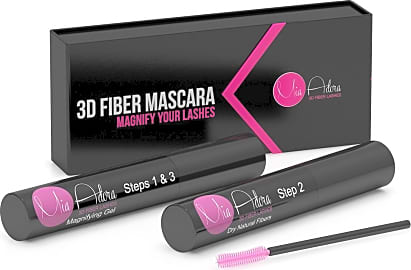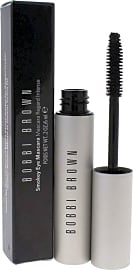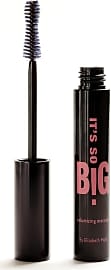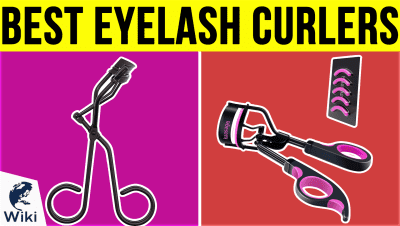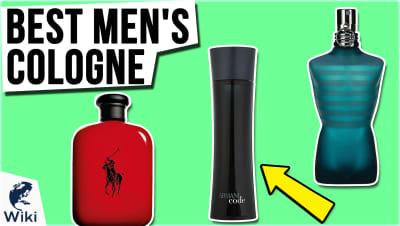The 10 Best Mascaras

This wiki has been updated 47 times since it was first published in March of 2015. Add a little extra flair to those most alluring assets: your eyes. The mascaras on this carefully-curated list will help you achieve the fullest, loveliest lashes in town, and they are available in smear-proof formulations that won't smudge or clump. With these, you can look and feel your best all day long and in any situation. They can also add an impressive amount of length and volume. When users buy our independently chosen editorial choices, we may earn commissions to help fund the Wiki.
Editor's Notes
March 05, 2019:
Depending on the day's plans, or the surprises in store, women need a good variety of mascara, which is just what we're offering. Partiers who may not wake up back in their own beds (nobody's judging) will love the long-lasting staying power of the Trish McEvoy High Volume and Tarte Cosmetics Gifted Amazonian. Those headed out for date night in need of a dramatic look will want to check out the Bobbi Brown Smokey Eye and Clinique High Impact, the latter of which, along with La Roche-Posay Respectissime Extension, is a tear-free formula, perfect for those with sensitivities. If you are tired of thin, light lashes and really want your eyes to pop, you'll find what they're looking for in the Elizabeth Mott It's So Big.
Choosing Your Best Mascara
Many of these selections are equal to what you'd find in a professional makeup artist's bag.
Before there were eyelash extensions and magnetic falsies, there was the classic tube of mascara. If you were born sometime prior to the advent of the internet, this cosmetic mainstay was likely available at your local drug store in a few different varieties (non-smudge and waterproof), and if it was the 1980s, a handful of sickeningly bright hues. If you needed something really special, you would head to the mall and brave the fluorescent lighting of a department store beauty section. Thankfully, modern mascara is more versatile than ever before and more accessible to boot. There are formulas for every occasion, with wands engineered for multiple application styles and every lash type imaginable.
Manufacturers have taken to adding vitamins and plant extracts to their formulas in order to condition lackluster lashes. These nourishing solutions may have vitamin E, which helps to keep lashes moisturized and healthy, and vitamin C, an excellent combatant to harmful pollutants. Some boast refreshing cucumber extract that can wake eyes up and provide a pleasant fragrance, and others contain rejuvenating jojoba oil to reduce clumping.
Then there are products specifically created to stimulate growth. These contain ingredients such as biotin, collagen, and amino acids that work to strengthen weak or brittle lashes. They don’t work overnight, however, so you’ll need to be patient and diligent in your application, and refrain from using solutions that may exacerbate the problem.
Those with sensitive eyes can go the completely all-natural route. These non-toxic options use real fruit or black tea for pigment, resulting in lush coloring and a lovely scent. Carnauba and beeswax serve as excellent natural thickeners that can create a dramatic look just as well as their chemical-touting counterparts, and shea butter works as a superior moisturizer. Many of these selections are equal to what you'd find in a professional makeup artist's bag.
If you live in a high-humidity area or simply want to look your best while working out, there are water- and sweat-resistant varieties that even a mermaid would swear by. These resilient mascaras can last all day and night, making them ideal for everything from running errands to attending a music festival in the desert.
All About The Wand
Eyelashes come in myriad shapes and sizes, from the short and barely-there to the sweeping feather dusters we all secretly covet. If you haven’t considered the type of wand you’ve been using to apply your favorite formula, you might do yourself a favor and start now — there’s a science to that little brush, after all.
Eyelashes come in myriad shapes and sizes, from the short and barely-there to the sweeping feather dusters we all secretly covet.
First, there's the unmistakable thick wand we all know and love. These brushes are big and packed with bristles, making them well-suited to lashes that need an extra dose of volume. They tend to coat every single hair generously, so you'll want to use one alongside a non-clumping formula. If you're looking for modest, even coverage from root to tip, consider going the opposite route with an ultra-thin comb design. These are great for adding length to sparse lashes without gumming them up.
Then there’s the tapered wand. Just as you’d suspect, these are thicker at the base and thinner near the tip. Their dense bottoms bestow an ample coating on your middle lashes while the slimmer end works on your hard-to-reach corner hairs. If you wear the cat eye look often, this style of brush will be your new best friend.
Next up is the trusty curved wand. This helps to curl your lashes upward as it coats them, and is a bit easier to wiggle at the lash line when you’re separating each strand. Take care though, as a heavy mascara will weigh down thinner lashes. In any event, you’ll most likely still benefit from having an eyelash curler handy to use before application.
Finally, there's the hourglass shape, which was developed by Too Faced Cosmetics in homage to Marilyn Monroe. This style has enjoyed newfound popularity and may have even eclipsed the traditional rectangle wand in most medicine cabinets. This is because it soaks up a generous amount of product and applies a consistent, smooth layer, so it's ideal for those who like to add multiple coats.
A Brief History Of Mascara
We can trace the origins of mascara, not unsurprisingly, to ancient Egypt. Men and women alike would use kohl to blacken their eyelids and lashes. It was less an aesthetic choice and more of a precautionary measure — they believed it would ward off evil spirits and protect their souls from harm. They used everything from soot and charcoal to crocodile dung to make it, and added thickening agents like honey to keep it from running. It was later adopted by the Babylonians, Greeks, and Romans. After Rome fell, mascara-type substances fell out of favor in Europe, but remained popular in the Middle East for religious purposes.
To apply it, you'd simply scrape the bar with a damp brush and then spread it across your lashes.
The Victorian era saw the rise of successful chemist and perfumer Eugene Rimmel. By this time, cosmetics were no longer seen as tools of the uncouth or vain, and respectable women would spend hours cultivating their beauty regimens. Dark, luscious lashes were highly sought after and a top priority for many ladies. With no alternatives available for purchase, they created their own mascara at home by heating a mix of elderberry juice and ash.
Recognizing a gap in the market, Rimmel concocted a non-toxic cake from the recently-invented petroleum jelly and coal dust. To apply it, you'd simply scrape the bar with a damp brush and then spread it across your lashes. It was messy and inconsistent, but a hit all over Europe nonetheless. To this day the word rimmel translates to mascara in a handful of languages, including French, Italian, Romanian, and more.
No significant improvements were made to mascara until the late 1950s when the highly successful Polish entrepreneur Helena Rubinstein created a lotion-based cream she could package in a tube. It was sold with an accompanying brush, but it wasn’t perfect — it would take a few more years of tinkering before it resembled the applicator we're familiar with today.


